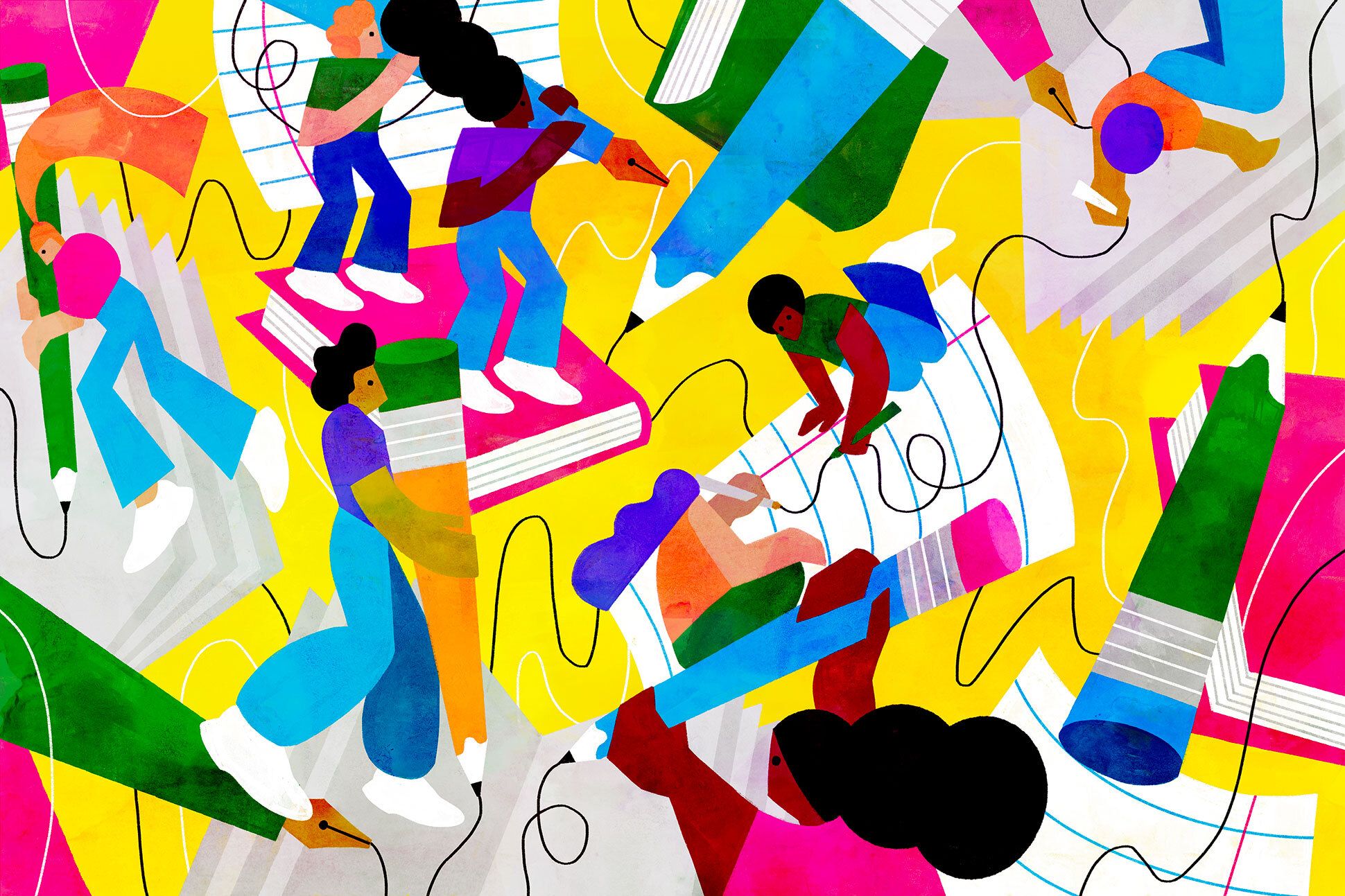Doing the Math (Grades 6–8)
Looking at what mathematicians and poets have in common.

For today’s prompt, we’ll explore how poets have delved into the world of math. Far from diametrically opposed, mathematicians and poets have lots in common. Both use a language of symbols as their materials. Like mathematical equations or proofs, poems can sometimes make arguments, and often give us insight into the world around us.
To begin, make a list of five calculations you’ve had to make as a human in the world. For example, how many jelly beans you can eat before you get sick. Or how long it takes to send a letter to loved ones who live far away. Then make a list of your own equations. For example, for me, 1 hot tea plus 1 wool blanket plus 1 book equals 1 Saturday morning.
Then, read Vanessa Angélica Villarreal’s f = [(root) (future)]. What is the calculus in the poem done by Carmen, Angélica, Silvia, Vanessa, and Joaquín? How does time function? What might the poet be saying about how we normally think of time?
Then, read Abacus by Sandy Florian. What kinds of strange equations does this poet make? Why might she identify with an abacus, an ancient tool of calculation?
Now, read Numbers by Mary Cornish. What kinds of calculations does this poet make? Why can numbers be thought of as generous? Where else might someone find an unexpected gift or generosity?
Now, use your lists to write a poem about or with math.


